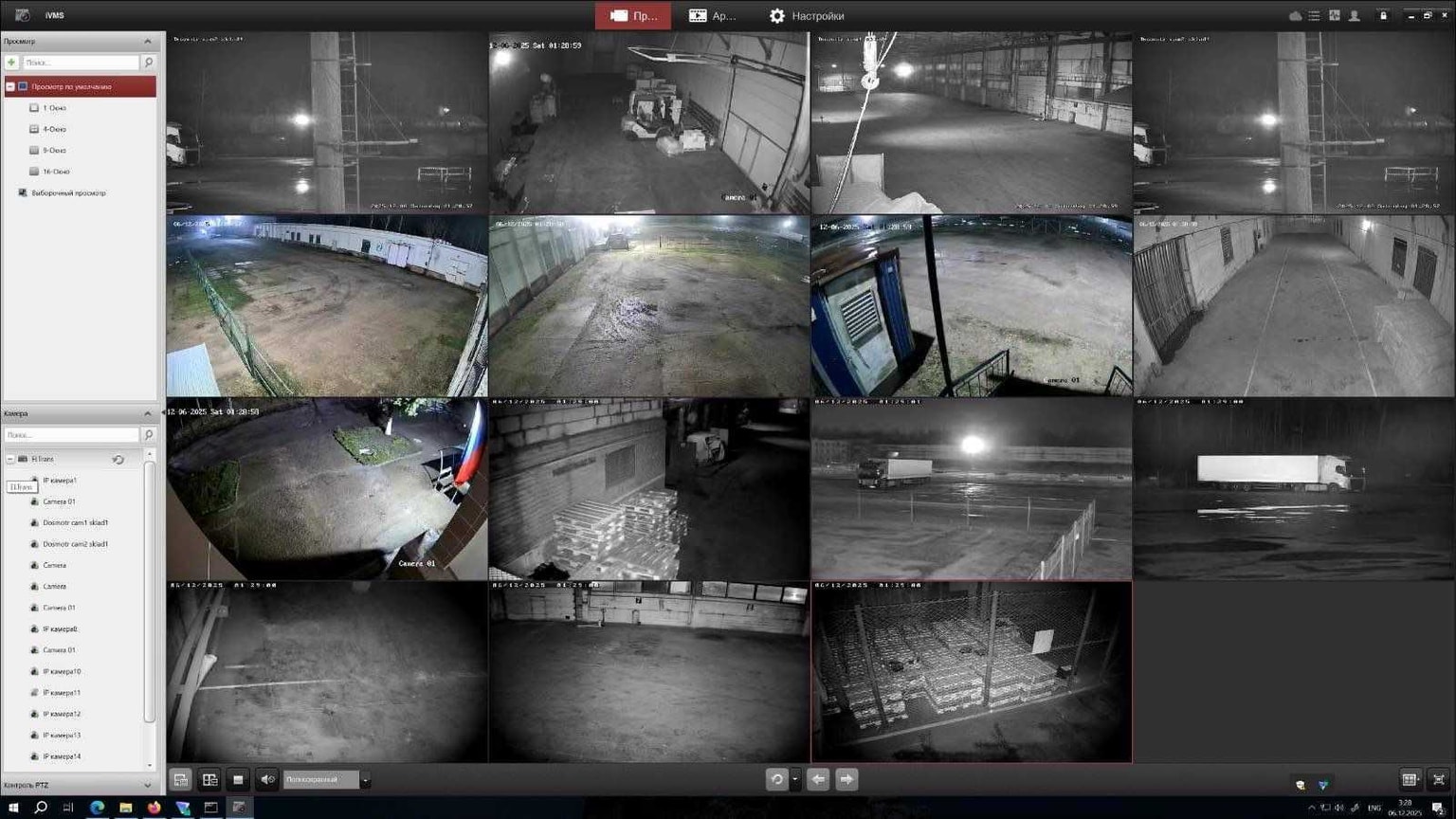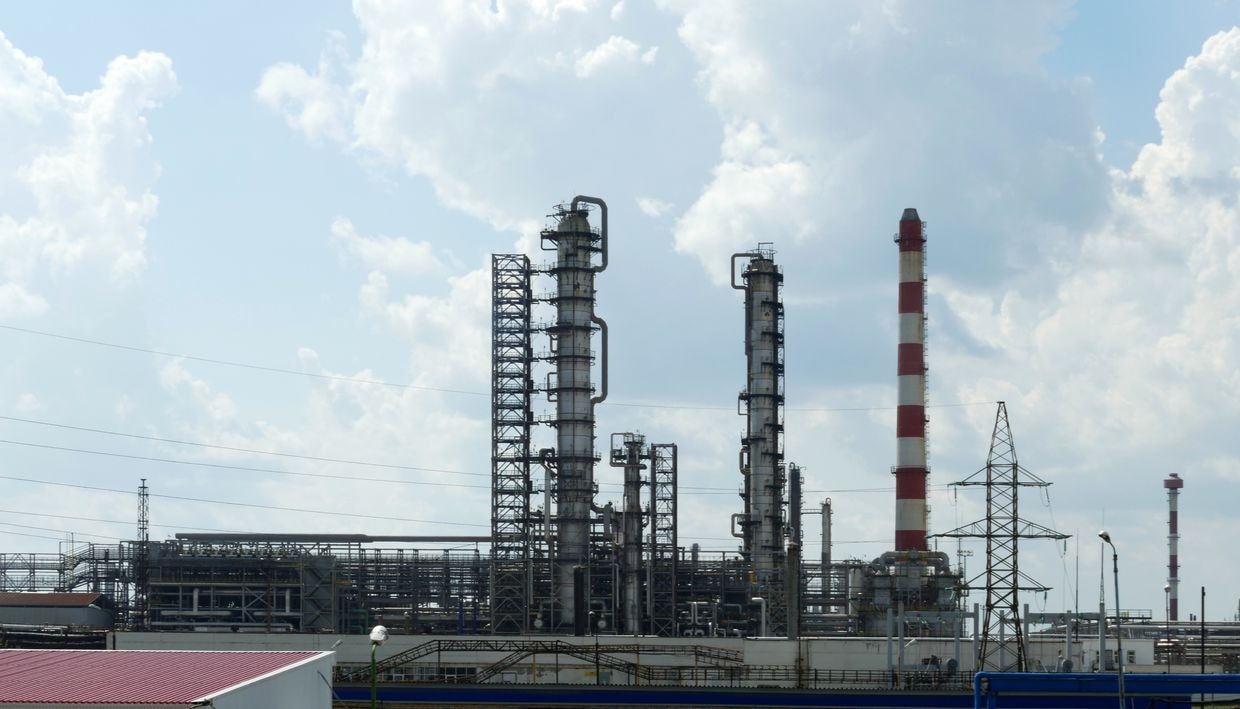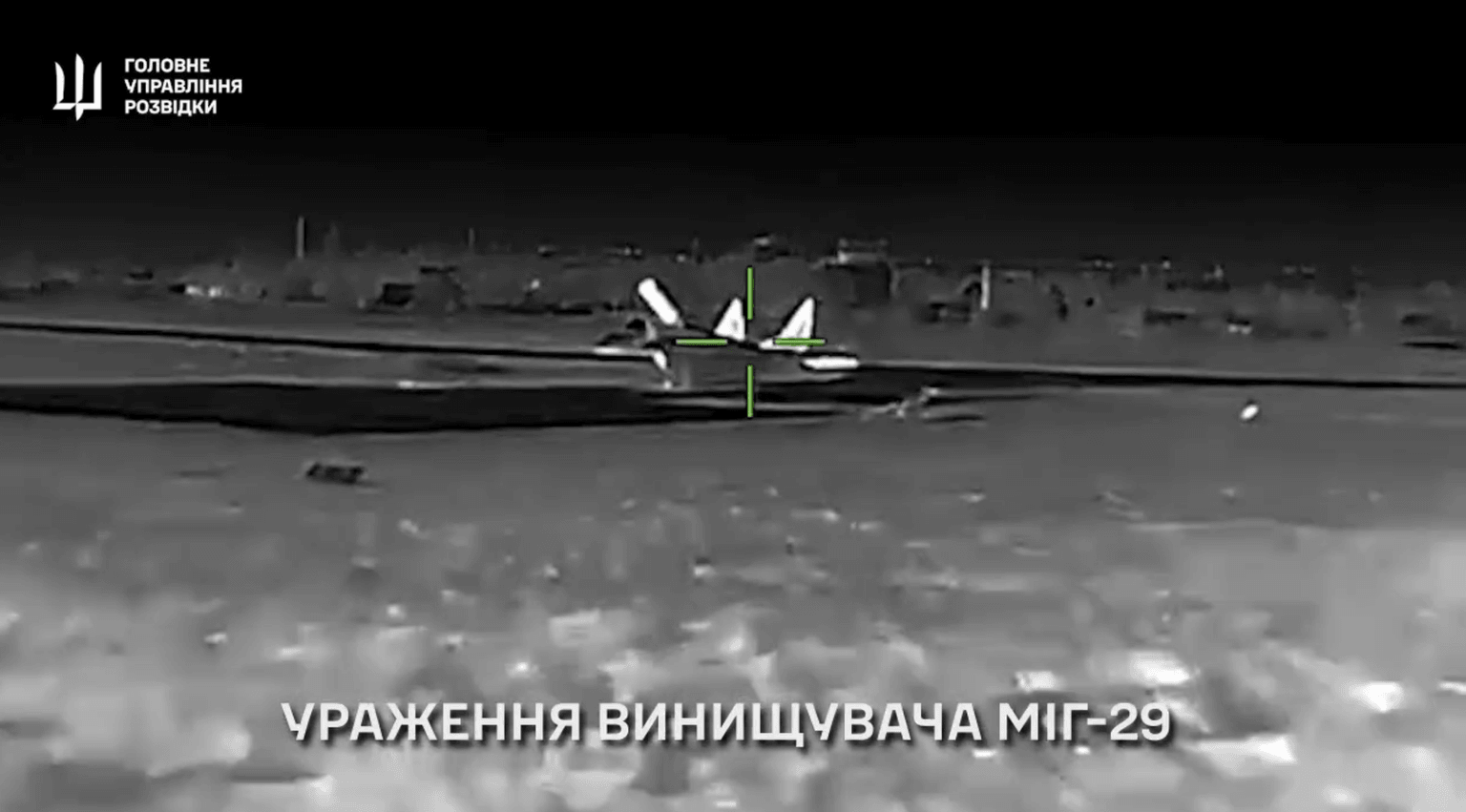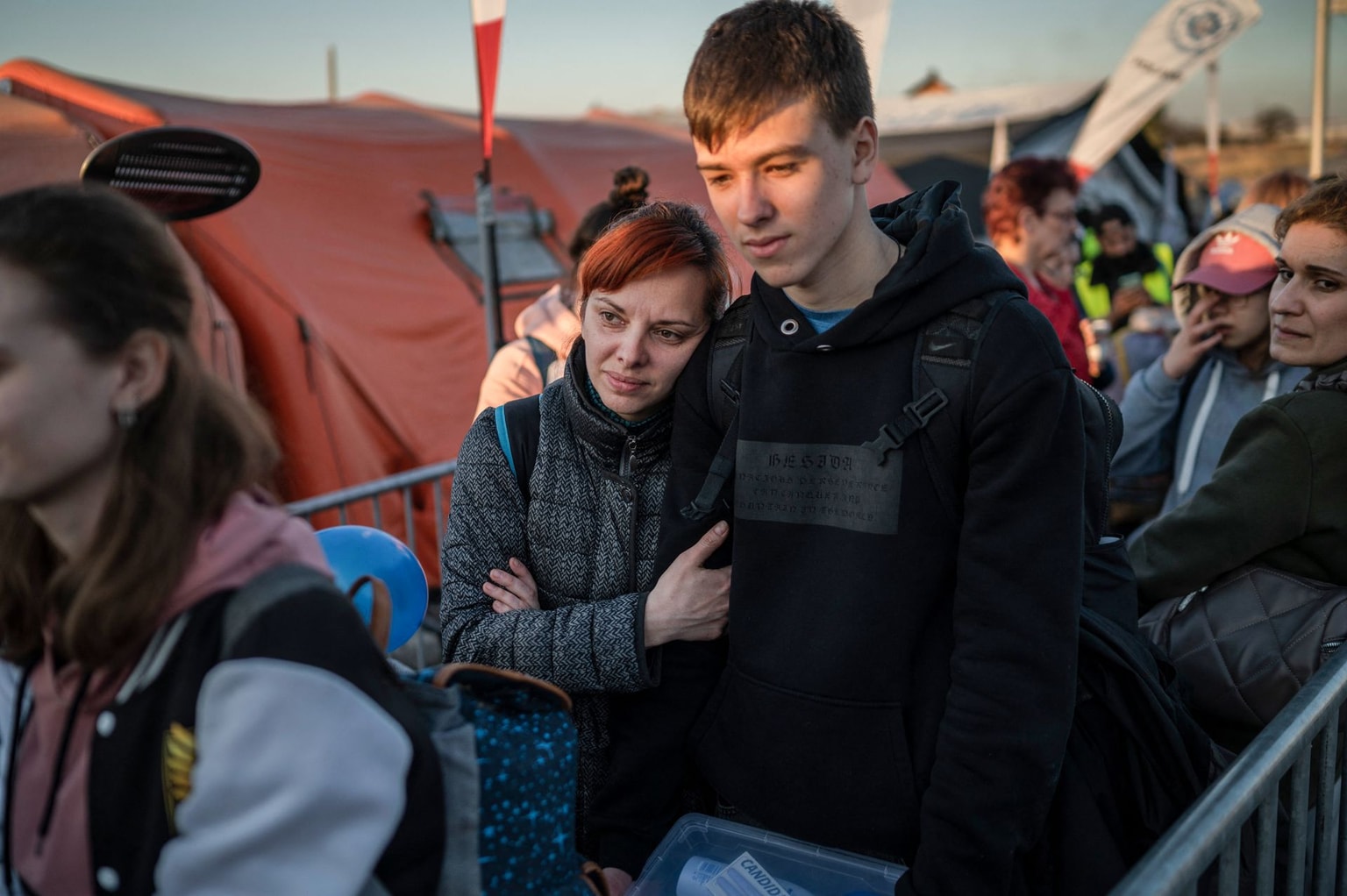
The rise and fall of Ukraine's Kursk gambit
A destroyed border checkpoint with signs reading "Ukraine" and "Russia" is seen in Sudzha, Kursk Oblast, Russia, on Aug. 16, 2024. (Kostiantyn Liberov / Libkos / Getty Images)
As Ukraine's seven-month-long incursion into Russia's Kursk Oblast came to what appears to be its end, Ukrainian soldiers and military experts are questioning the operation's goal and the long-term effect it will have on the war.
Ukraine launched a surprise cross-border incursion into Russia's Kursk Oblast in August 2024, using the initial momentum to occupy Russian border territories in an attempt to divert Russian attention from Ukraine's east.
That proved ineffective, with Russian troops continuing their advance in Ukraine's Donetsk Oblast, reaching the doorsteps of Pokrovsk in late 2024.
As a result of Ukraine's continuing hold on parts of Russia's bordering region, and the new U.S. administration's desire to force Kyiv into peace talks, a new goal for the operation began to shape — to use it as a bargaining chip in potential peace negotiations.
In January, then-U.S. Secretary of State Antony Blinken said Ukrainian positions in Kursk Oblast could "factor in any negotiation that may come about in the coming year."
But Ukrainian and Western military experts argued that Kyiv dragged its feet way too long by remaining in Kursk Oblast despite the critical logistical situation, echoing the frustrations of soldiers who spoke with the Kyiv Independent.
According to their analysis, it may have been a lot more effective as a weeks or a month-long raid into Russia rather than a grueling battle for a territory of little value to Ukraine and what soon appeared to be to Russia as well.
"If (Kursk) was a gamble, then tactically the operation was successful, even though its follow-on phases could not be executed," D.C.-based military analyst Michael Kofman, a senior fellow in the Russia and Eurasia Program at the Carnegie Endowment for International Peace, said.
"Did it serve its purpose as stated at the operational or strategic level? Here, I'm more skeptical, but on the other hand, it could have gone far worse than it did."
Launching the unexpected
For months before the incursion, Kyiv warned that a Russian offensive on Sumy Oblast, which lies across the border from Kursk Oblast and was far from an active warzone, was imminent.
It allowed Ukraine to disguise troop and equipment deployment in the border areas as a defensive measure.
Sapper Oleksii, with the elite 80th Air Assault Brigade, said he took his guys to demine the border areas for artillery placement in the weeks leading up to the incursion.
The brigade broke through the border once the aviation and long-range weapons fired off overnight, according to Oleksii. The breakthrough took place on Aug. 6, shocking Kyiv's Western supporters and many Ukrainians as well.
But the soldiers on the ground say some doubted the incursion even before it began. Oleksii said one of the battalions in his unit saw more than half of its soldiers refuse the order, arguing why they should invade Russia when the defense elsewhere was at threat. They had come from more than a year of defending Chasiv Yar in the eastern Donetsk Oblast, where Moscow had recently reoccupied the village of Klishchiivka, which the unit had fought to liberate for months.
The Ukrainian push came from multiple directions, with the main axis being the 80th and the 82nd Air Assault Brigade storming toward Sudzha.
Yaroslav, a serviceman in the Ukrainian Special Forces sabotage and reconnaissance group that identifies as Ua Reg Team, said his unit headed toward the city of Kursk, northeast of Sudzha.
"It was a diversionary maneuver," Yaroslav, whose unit was pulled out in February, told the Kyiv Independent.
"It didn't work for a simple reason that the Ukrainian Armed Forces have just one road to move all the supplies for the involved units."
With a completely new direction opening up "a wide variety of possibilities," Yaroslav said his unit conducted ambushes, sabotage, and clearing operations.
Ukraine came close to capturing the town of Korenevo in August, which the experts say would have helped Kyiv secure the Kursk salient better, with the river to the west working as a geographical barrier. Located along a river that cuts through the town, Korenevo serves as a crossroads and sits about 20 kilometers north of the Ukrainian border.
An FPV drone pilot who goes under his callsign Crimea said his 82nd brigade lacked troops to go further than a few streets in the town that it broke through.


"It didn't work for a simple reason that the Ukrainian Armed Forces have just one road to move all the supplies for the involved units," Austrian warfare expert Tom Cooper said, referring to the main road from Sumy Oblast to Sudzha.
The lack of communication and coordination with other units made it difficult to know who the surrounding positions belonged to, according to the soldiers on the ground. The Starlink satellite internet constellation, on which Ukrainian soldiers rely for communication on the battlefield, doesn't work in Russia, they added.
"Kursk was not an easy area to operate," analyst Kofman said. "The terrain was challenging, communications were very patchy early on, the salient by its nature meant the geometry of the fight was disadvantageous."
With limits to the available intelligence, the Ukrainian soldiers interviewed said they were always cautious of Russian troops appearing from out of nowhere.
Sapper Oleksii from the 80th brigade said that it has led to friendly fire from time to time.
Grinding Russian pushback
Around mid-September, Russia accumulated enough troops to launch a counteroffensive to reclaim its territory.
But Russia continued to prioritize its offensive efforts in Donetsk Oblast, where its troops were making gains near the city of Pokrovsk. Kyiv had hoped that the pressure along the front line would lift if Russia had to redeploy troops to Kursk Oblast, but instead they mostly came from reserves and non-priority fronts such as the one in Zaporizhzhia Oblast, according to experts.
President Volodymyr Zelensky said in early September that Russia had pulled over 60,000 troops to Kursk Oblast to counter the Ukrainian incursion, allowing Kyiv to fulfill one of its goals to divert Russian troops away from the hotspots of the war. Ukraine claimed to have captured around 100 Russian settlements and over 600 Russian prisoners of war (POWs).
But the Russian offensive in the east accelerated instead, taking advantage of some of the most elite and war-experienced Ukrainian units being taken off the Donetsk front.
One wave after another, Russian troops relentlessly tried to push the Ukrainians out of the Kursk salient. Eventually, Russia changed the frequency of its attack drones and used fiber optic ones, hampering Ukraine's ability to jam them and making logistics practically impossible.
"It's a weapon that can't be fought against," Oleksii said.
Up until January, the Russian grinding assaults were slow, even if they occasionally captured some ground, according to Jakub Janovsky, a Prague-based military analyst at Oryx OSINT Project.
But "it was just a matter of those slow, gradual advances adding up over time," Janovsky said.
Russia knew Ukraine's vulnerability in logistics because the single road leading into Sudzha from Sumy Oblast was essentially the backbone for the Kursk salient, according to the expert.
"So they obviously knew where to push to be within the range of this logistics route, and over time, they managed to do that," he said.
The worsening logistics made it costly for Ukraine to sustain the Kursk incursion, turning a surprise incursion into a grueling months-long battle that depleted the defending power of people and military hardware.
"(Russia) realized that it could block key roads with FPVs, and it was always trying to narrow our bridgehead, cut off the roads, and throw a lot (of troops and FPVs) at us," Yaroslav from the Special Forces said about the mid-winter assaults.

In the northern direction of the Kursk operation, Yaroslav said that Russia would deploy two brigades, even though one would have been more than enough for the operation, constantly putting pressure on the Ukrainians.
To keep up the offensive operations in Ukraine's east, Russia additionally deployed some 12,000 North Korean troops in Kursk Oblast to force the Ukrainians out, according to Ukrainian and Western intelligence.
North Korean troops would move forward one group after another and wait for the Russian infantry to take over the captured position, according to Yaroslav. But the North Koreans, he said, lacked synchronization with Russian troops and faced heavy losses.

"They completed the mission, returned (to the rear), and the Russians don't understand where they went," Yaroslav said, explaining how it allowed Ukrainian troops to retake the lost positions before the Russians managed to secure them.
But the troop number was significant, eventually yielding gains. Yaroslav said the North Koreans were fighting from the right and left flanks of the Kursk salient, as well as the areas near the Ukrainian border. While vulnerable to drone warfare at first, the North Koreans began to adapt their tactics and were good at shooting down aerial targets, according to multiple soldiers interviewed.
Ukraine has only captured two North Korean prisoners of war (POWs), with many of those in danger of being captured killing themselves to avoid being taken prisoner.
Then-U.S. Defense Secretary Lloyd Austin said in January that North Korean soldiers have suffered over 1,000 casualties.
The inevitable withdrawal
From the start of the year, even as Ukraine recaptured some positions, a withdrawal was inevitable.
"Russian forces steadily compressed the pocket, then using fiber optic cable drones, they were eventually in a position to start interdicting the supply routes," Kofman said.
"Eventually, the force was logistically unsustainable and had to withdraw."
Yaroslav, from the Special Forces, added that the combat and experience levels of the Ukrainian units fighting in Kursk declined over time, which also forced elite assault units — such as the 80th and 82nd — to fill in as regular infantry to defend the positions.
The elite Air Assault brigades, with experience from Donetsk, Kharkiv, and Zaporizhzhia oblasts, demonstrated their level in the initial breakthrough, but over time, "the paratroopers turned into battered infantry," according to Yaroslav.
Ukraine may have lost much less equipment, especially the valuable U.S.-made ones that are unlikely to be replaced soon, if it had carried out an organized retreat at least a month earlier, according to experts interviewed.
"Ukraine didn't have enough resources to spare such an operation without making sacrifices."
From late February to mid-March, Ukraine has lost 122 pieces of equipment, in contrast to Russia's loss of 51, which mostly included armored fighting vehicles, infantry mobility vehicles, self-propelled artillery, and tanks, according to Oryx, which tracks Ukrainian and Russian losses through open-source data.
The estimated overall equipment losses during the battle for Kursk Oblast is 790 pieces of equipment for Ukraine in comparison to Russia's 740.
"Around early February, it stopped being viable for Ukraine to stay there," Oryx expert Janovsky said, calling the extended stay in Kursk Oblast "a short-sighted political decision."

"Ukraine didn't have enough resources to spare such an operation without making sacrifices," he added, referring to the losses in Russia's Kursk Oblast and Ukraine's Donetsk Oblast.
Expert Cooper believes that "the best solution overall" would have been a raid rather than the "absolutely nonsensical" approach of sending troops inside Russia and not being able to supply them with what they need for the operation.
Bohdan, a soldier with the 80th brigade, said he barely escaped. With no way of communicating with others after their position was hit, his team walked out on foot for two days, expecting to be hit by omnipresent drones.
Cooper believes that by not withdrawing in time, Ukraine's military leadership had drastically decreased the chances of its troops' survival in the area.
Sapper Oleksii now fears that he will be sent on another assault maneuver to fulfill Kyiv's need to demonstrate to the West that Ukraine still has the ability to fight back.
"And if there won't be enough equipment, they will replace (the lack of equipment) with people," Oleksii said.
Note from the author:
This is Asami from the Kyiv Independent. Thank you for reading this story.
The challenges are far from over, and the situation on the front lines in Ukraine continues to worsen. But my colleagues and I are working around the clock to bring you the latest updates, whether they're good or bad.
Please consider joining the Kyiv Independent community. Your support helps sustain our work.
Thank you.










